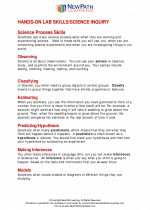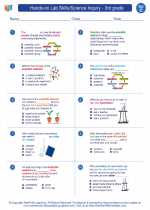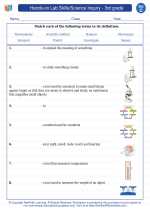Defense in Living Organisms
Defense in living organisms refers to the mechanisms and processes that protect them from potential threats such as pathogens, predators, and environmental stressors. This is a crucial aspect of survival and is present in all living organisms, from single-celled bacteria to complex multicellular organisms.
Types of Defense Mechanisms
There are several types of defense mechanisms in living organisms:
- Physical Barriers: Many organisms have physical structures such as shells, thorns, or tough outer coverings that act as barriers to protect them from predators and pathogens.
- Chemical Defenses: Some organisms produce toxic chemicals or compounds that deter predators or inhibit the growth of pathogens. Examples include the toxins in certain plants and the venom of snakes.
- Immune System: In multicellular organisms, the immune system plays a vital role in defense. It recognizes and eliminates pathogens and foreign substances through a complex network of cells, tissues, and organs.
- Behavioral Adaptations: Many animals have evolved specific behaviors that help them avoid predators or dangerous situations. These can include camouflage, mimicry, and fleeing from danger.
Adaptations for Defense
Organisms have evolved a wide range of adaptations to enhance their defense capabilities:
- Mimicry: Some species have evolved to mimic the appearance of other organisms that are toxic or dangerous to predators, providing them with protection.
- Camouflage: Many organisms have developed coloration or patterns that help them blend into their surroundings, making them less visible to predators.
- Warning Coloration: Certain species have bright and conspicuous colors to warn potential predators of their toxicity or unpalatability.
- Regeneration: Some organisms have the ability to regenerate lost body parts as a defense mechanism, allowing them to escape from predators or recover from injuries.
Study Guide
Here are some key points to remember when studying the topic of defense in living organisms:
- Define defense and explain its importance in living organisms.
- Identify and describe different types of defense mechanisms, including physical barriers, chemical defenses, and the immune system.
- Understand the role of behavioral adaptations in defense, and provide examples of such adaptations in different organisms.
- Explain how specific adaptations such as mimicry, camouflage, and warning coloration contribute to an organism's defense.
- Discuss the concept of coevolution and how it relates to defense mechanisms in organisms and their predators.
By understanding the various defense mechanisms and adaptations in living organisms, we gain insights into the complex and fascinating ways in which organisms have evolved to protect themselves in their environments.
[Defense] Related Worksheets and Study Guides:
.◂Science Worksheets and Study Guides Third Grade. Hands-on Lab Skills/Science Inquiry - 3rd grade

 Worksheet/Answer key
Worksheet/Answer key
 Worksheet/Answer key
Worksheet/Answer key
 Worksheet/Answer key
Worksheet/Answer key
 Worksheet/Answer key
Worksheet/Answer key
 Vocabulary/Answer key
Vocabulary/Answer key
 Vocabulary/Answer key
Vocabulary/Answer key
